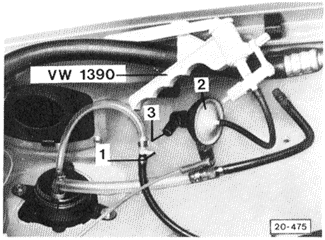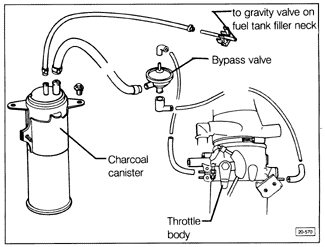Testing Charcoal Canister Bypass Valve (CIS, CIS-E, Digifant)The charcoal canister connections and the bypass valve are shown in Fig. 4-21. The valve is tested by trying to pass air through it to determine when it is open or closed.
To test the bypass valve disconnect the gravity/vent valve line from the bypass valve, as shown in Fig. 4-22, and blow into the open port of the valve. It should be closed and air should not pass through.

Apply vacuum to the small vacuum hose connection on the bypass valve, as shown in Fig. 4-22 above, and once again blow into the open port of the valve. With vacuum applied, the valve should be open and air should pass through. A bypass valve which fails either test is faulty and should be replaced. The charcoal canister and bypass valve hose routing is slightly different for cars with Digifant. The system is shown in Fig. 4-23. The valve can be tested as described above.

Previous, Next, Contents, Home.
|
